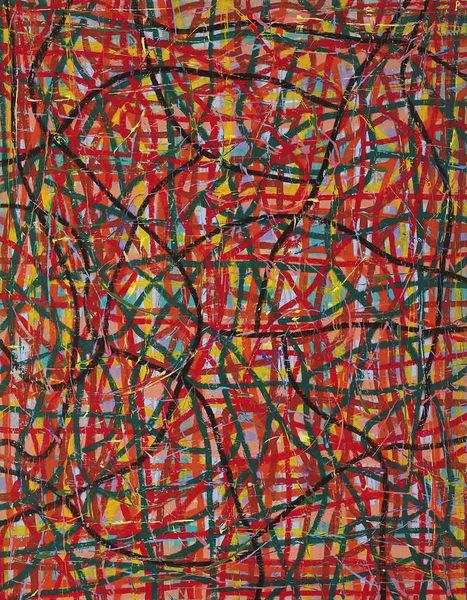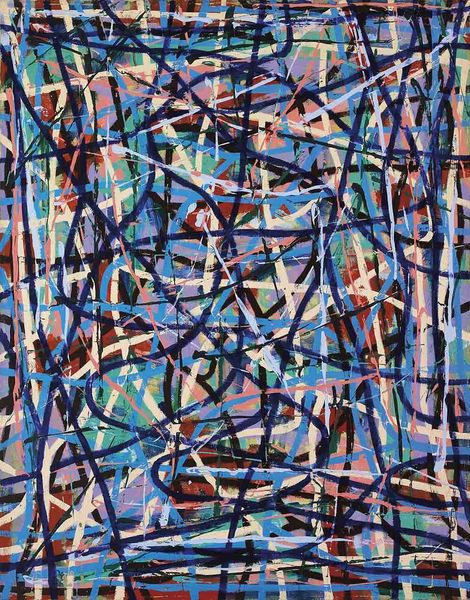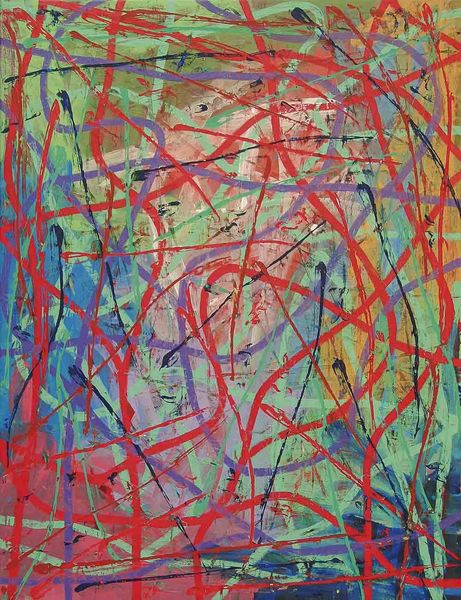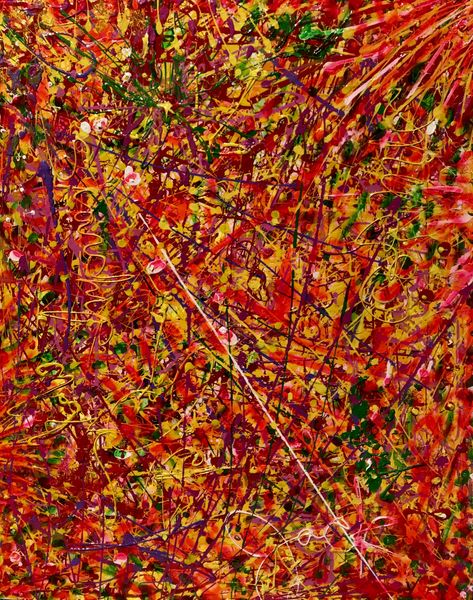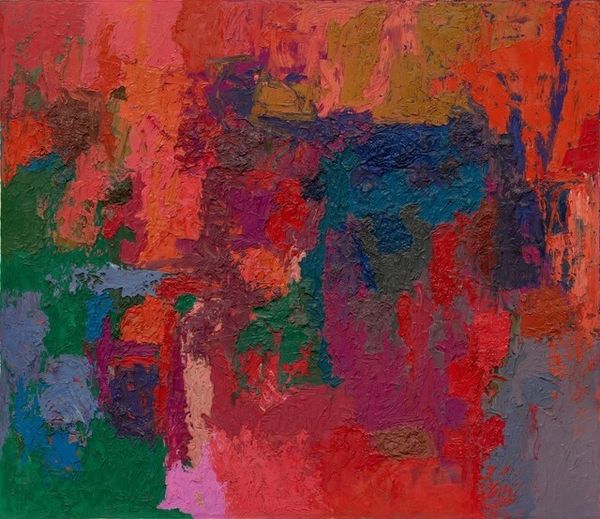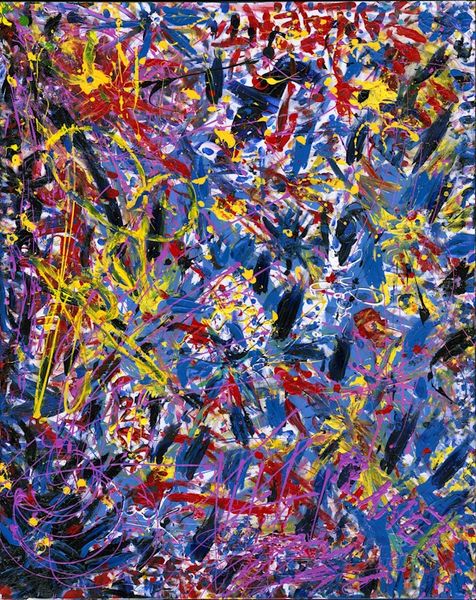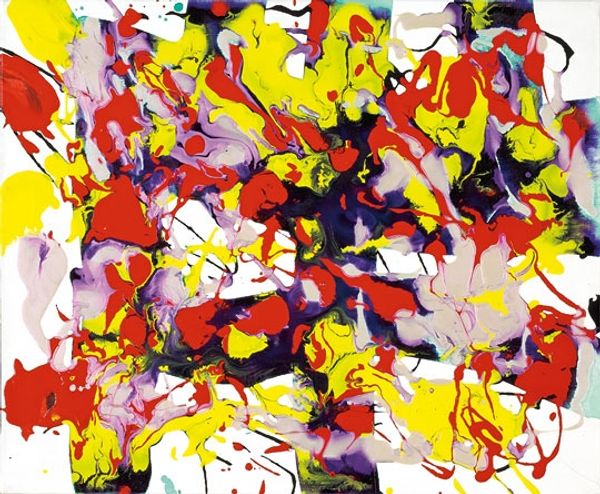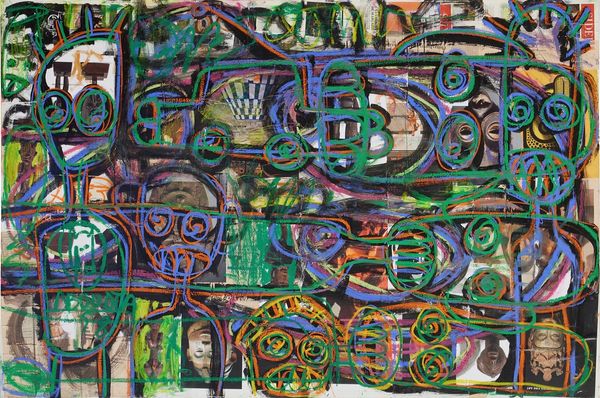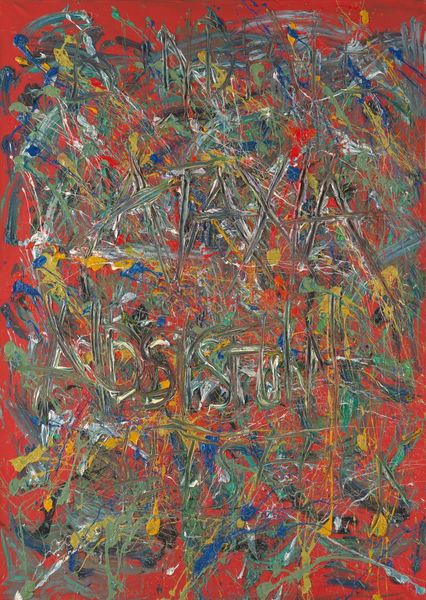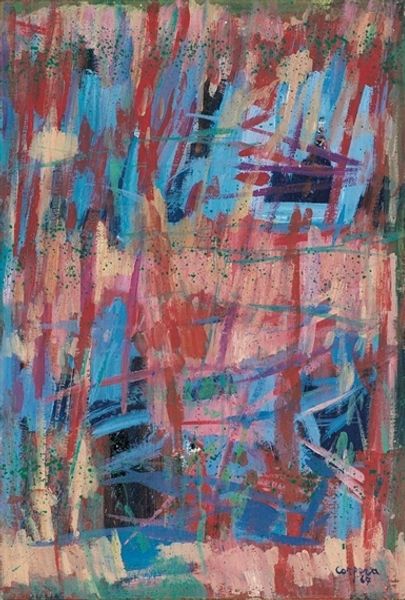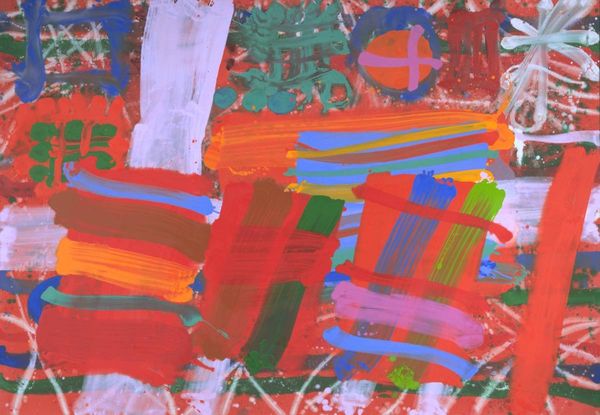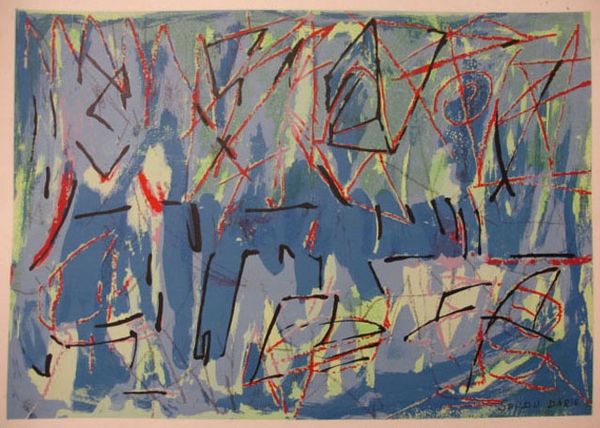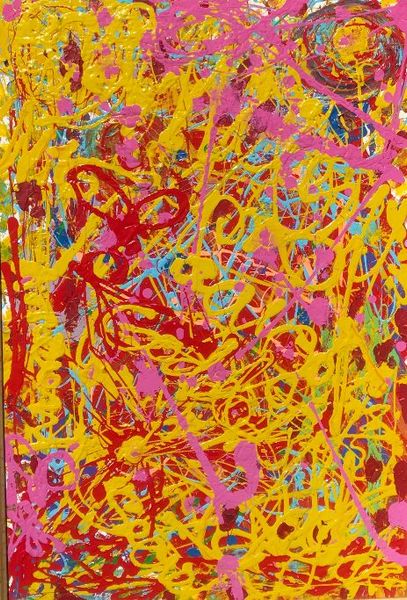
Dimensions: 61 x 61 cm
Copyright: Creative Commons NonCommercial
Curator: This mixed-media work, “Correction #30,” was created by Pablo Rey in 1999. There's a chaotic, almost frenetic energy emanating from it, wouldn't you agree? Editor: Absolutely, there’s a sense of restlessness here, a controlled explosion. The overlaying lines create visual tension. Curator: Given that the artwork makes prominent use of lines and abstract patterning, I suspect that a deep, psychologically potent desire for order lurks beneath that initial impression of chaos. This notion may, in turn, represent a modern interpretation of historical desires to arrange experience, and the world in symbolic order. Editor: An interesting point, that inherent contradiction between apparent disorder and an underlying structure. Looking closer, one sees the red grid fighting for dominance. How much did socio-political issues play into abstraction like this in the late nineties? Was Rey critiquing established orders? Curator: Considering Rey’s title, perhaps there’s commentary on societal structures of perfection, of a kind of ultimate rightness to which humans ought aspire but invariably fail to actually meet, as this pattern of failure inevitably marks the cultural memory through material objects and aesthetic arrangements, even if the message is subtle. I can imagine this artwork challenging late-20th-century orthodoxies in Spanish society. Editor: It feels quite removed from direct political engagement, though. More like an exploration of feeling and affect in an increasingly regulated world. The fact that he made it from textiles speaks to a history of art considered less important than "fine" art like painting and sculpture. It makes me wonder how institutions might try to elevate such cultural works while respecting histories of craft, labor and marginalization? Curator: Textile can represent comfort, and fragility. Perhaps, a certain collective yearning for protection against an increasingly unstable, post-Cold War world? And an attendant questioning of art world values, and boundaries. Editor: Ultimately, though, I keep coming back to that title, "Correction #30." There’s a fascinating implication of iterative process, an ongoing striving, evident here through vibrant patterns layered in paint on fabric. It could mean so many things! Curator: It’s a perfect summation of the human condition, in art and society. Perhaps there is a deeply moral vision in “Correction #30.” A need for humanity, both in abstraction, in a globalising world, and also maybe some moral reconfiguring in art as well?
Comments
No comments
Be the first to comment and join the conversation on the ultimate creative platform.
